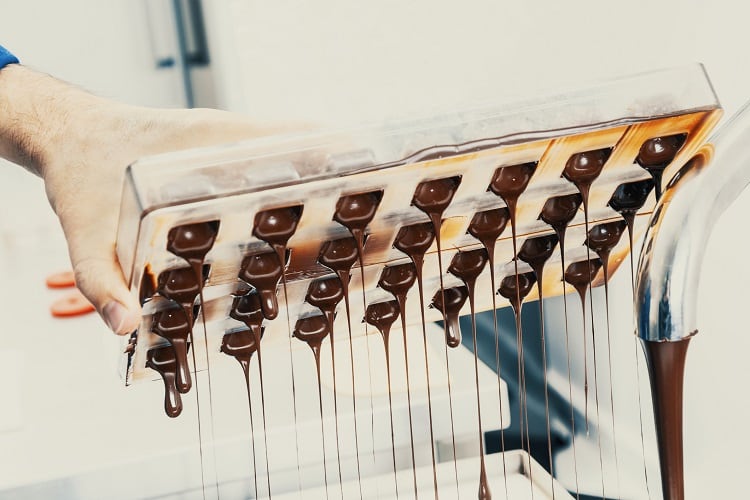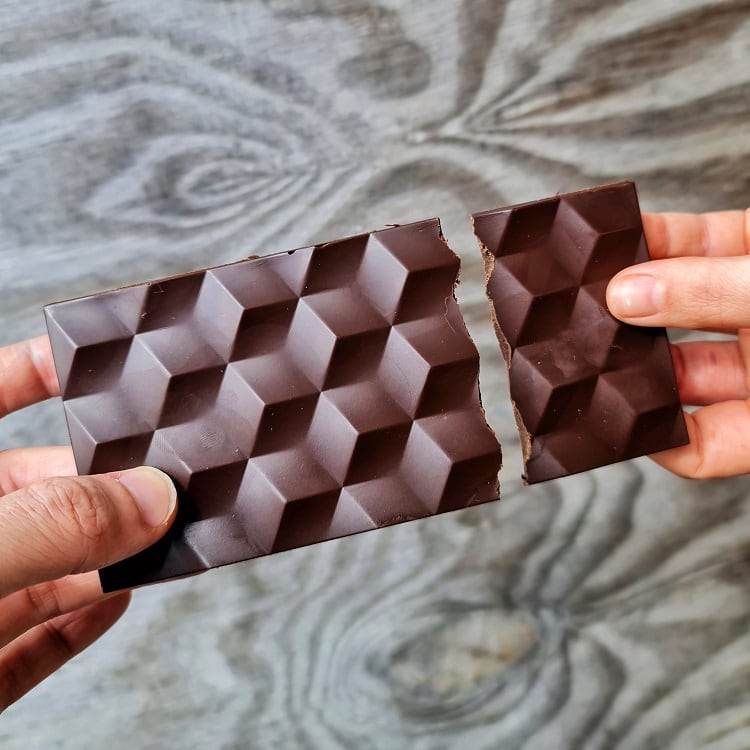Chocolate is amongst the most-loved confectionery products worldwide. But with cocoa a primary ingredient, and sourcing associated with forced labour and climate risk, chocolate’s sustainability credentials are attracting increased attention.
According to entrepreneurs Ahrum Pak and Dr Johnny Drain, consumers are increasingly concerned about deforestation, habitat destruction, and unfair labour practices within the conventional chocolate supply chain, which for the most part originates in West Africa – where around 70% of the world’s cocoa is sourced.
In response, the duo founded WNWN (pronounced win-win) Food Labs to make the product consumers know and love, but without cocoa and its often-problematic origins. “We love cocoa and chocolate, but only chocolate that has been made without slave labour and tropic deforestation,” Dr Drain told FoodNavigator, “and, it’s possible.”
Dark chocolate from carob and barley
Founded in 2020, WNWN launched its first product – a cocoa-free dark chocolate – last year. Already, an internal life cycle analysis has suggested its dark choc emits 80% less greenhouse gas than conventional chocolate.
Production, the co-founders explained, is not so radically different to that of conventional chocolate. To make chocolate, cocoa beans are fermented and then roasted, before being processed into the final product.
Instead of cocoa, WNWN makes its dark chocolate alternative from barley and carob using conventional chocolate making equipment. Barley – an ‘incredible’ grain, according to CTO Dr Drain – has been consumed in bread and alcohol for several thousands of years. Leaning on traditional fermentation techniques and ‘modern-day food science’, the start-up transforms barley into a ‘mega chocolatey’ product, Dr Drain previously told this publication.
Carob is a sub-family of the legume family, Fabaceae. The plant is widely cultivated for its edible and chocolatey fruit pods. WNWN’s carob is grown in Spain and Italy and is certified organic.
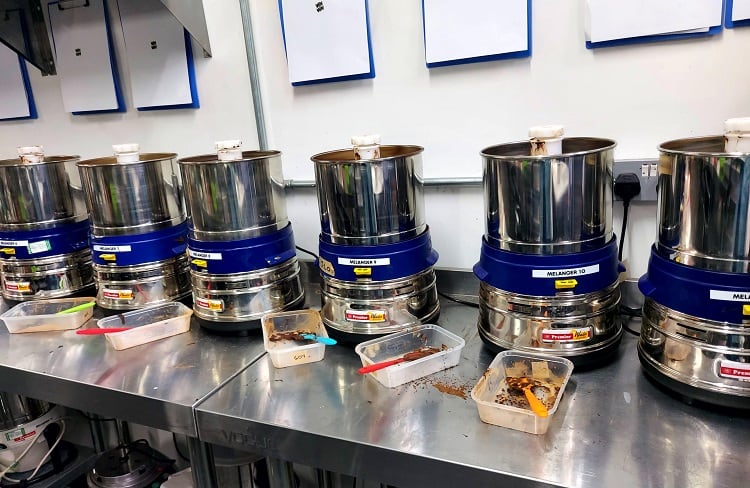
Once these raw materials are fermented, the processing stage begins, the co-founders explained during a recent visit to WNWN’s R&D lab in Hackney, London. “We mix these raw materials with fat and sugar,” chocolate maker Jon Hogan showed us.
Ghanian shea butter, which Hogan told us simulates cocoa butter, is the fat of choice. But the start-up continues to experiment with a variety of ingredients, and on the day FoodNavigator visited the lab, an algae-based fat under trial.
The objective of the next step, the refining process, is to achieve particle sizes of between 15-20 microns. “Premium chocolate has around 15–19-micron particles, commercial chocolate has around 22-25 micron particles,” WNWN’s Hogan told this publication. For WNWN, particle sizes of 15-20 microns makes for the ‘best flavour release’.
The chocolate is then tempered for snap and ‘meltability’. “You want it to melt at body temperature,” Dr Drain explained.
In terms of flavour, the start-up says it has achieved the archetypal bitterness associated with dark chocolate, as well as its ‘fruity acidity’. “We have red berries, prunes, notes of butterscotch in the long finish and maltiness coming through from the barley,” Dr Drain previously told FoodNavigator. “It’s a flavour profile that is very similar to that of premium dark chocolate: lots of acidity, brightness, complexity, and bitterness.”
‘Milk’ chocolate from oats and tiger nuts
Dark chocolate is considered the most complex of all chocolate types. For this reason, WNWN was keen to achieve a cocoa-free dark chocolate first. “We set the
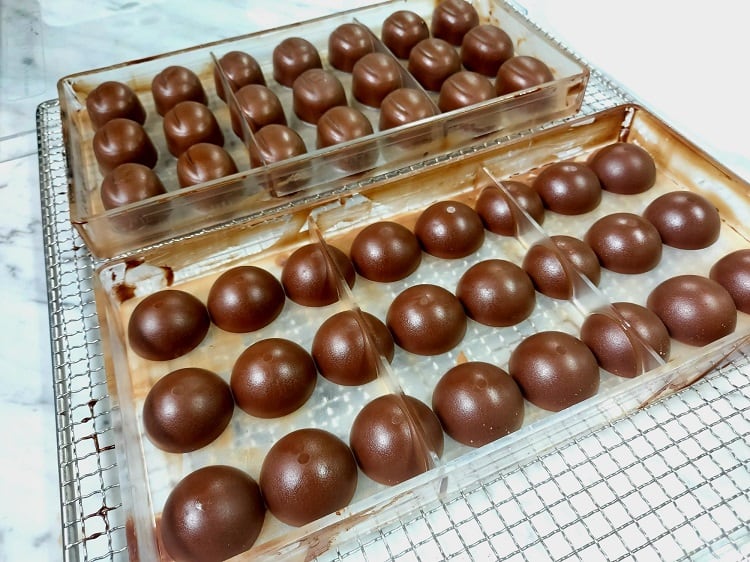
bar very high for us, to prove we could do it,” recalled CEO Pak. After achieving cocoa-free dark chocolate, the start-up believed ‘all other products should fall in line’.
This strategy appears to be working. Recently, WNWN completed the recipe and process for cocoa-free ‘milk’ chocolate. Similarly to its dark chocolate alternative, the ‘milk’ chocolate is dairy-free and made with its ‘hero’ ingredients carob and barley.
But its most recent innovation also contains a blend of oat milk powder and tiger nuts. “The process is similar, but the ingredients are different,” explained Dr Drain, adding that aside from the oats and tiger nuts, the start-up has also increased the vanilla content.
What is a tiger nut, readers may ask? They are, in fact, not nuts at all. Rather, tiger nuts are edible tubers from the grass-like Cyperus esculentus plant with origins in Northern Africa (but WNWN sources them from Spain). Tiger nuts have a lower water footprint than almonds, soybeans and oats.
The tubers are perhaps best known for their use in the milk-like drink horchata. When the tubers are ground down, they turn ‘milky’.
Using traditional foods, such as tiger nuts, is core to WNWN’s philosophy, explained the CTO. “At the moment in food tech, a lot of people are trying to reinvent the wheel…But people have been making dairy-free milks for years, horchata being a great example. So sometimes, as well as looking forward [for solutions] to address problems, we also look back to tradition and deep-rooted culinary practices for inspiration. That’s where [our inclusion] of tiger nuts came from.”
WNWN says its ‘milk’ chocolate is sweeter and creamier than its dark counterpart, with notes of mocha, malt and hazelnut, and a buttery finish. In terms of nutrition, WNWN’s chocolate is not dissimilar to conventional chocolate, only with slightly less sugar.
The product is now undergoing testing in various applications by CPG and foodservice operators, with plans to launch later this year.
When it does go to market, via D2C and/or retail channels, it will take the form of a chocolate bar. The offering presents an opportunity for WNWN to build awareness around current ethical and unsustainable supply chains in the conventional chocolate sector, explained WNWN marketing manager Adam Partridge.
“But at the same time, deliciousness is at the top of our priority list. We really need to be able to offer consumers both: a choc that is really tasty, and that in time will achieve price parity so that the switch from conventional chocolate is easy to make.”
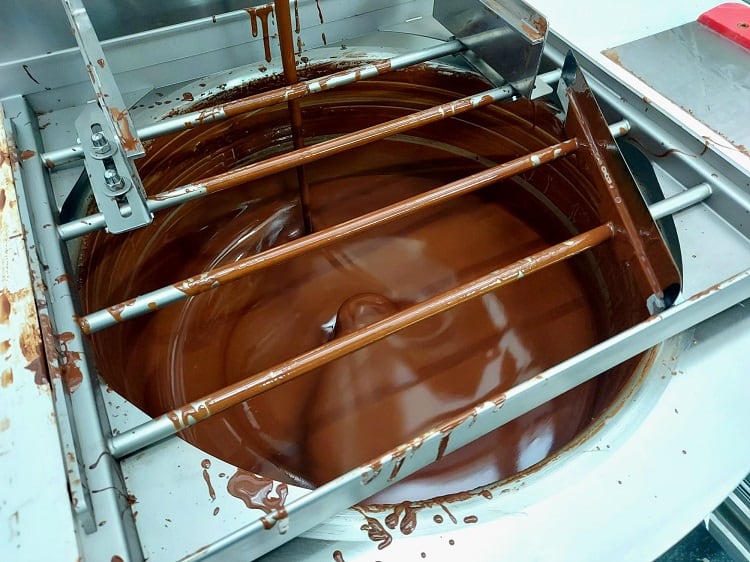
As to the ‘milk’ chocolate’s carbon footprint, WNWN is currently conducting third-party testing to compare its plant-based milk choc to dairy- and cocoa-based milk chocolate emissions.
Developing a marketing strategy: cocoa-free or carob-rich?
WNWN hopes its cocoa-free ‘milk’ chocolate product will appeal to conventional chocolate lovers as well as vegans. If taste is king, the start-up is concerned the dairy-free chocolate market is not up to scratch.
“We’ve tasted a lot of vegan milk chocolates, and that market is quite poorly served,” he told this publication. “There are a lot of bad ones, so we want to provide that choice in vegan confectionery, which often states of coconut oil or date syrup. We think vegans deserve better.”
Exactly how WNWN will market its product – to vegans, flexitarians, and eco-conscious consumers alike – has not yet been finalised. It would appear the start-up has a couple of options: to obviously market the product as cocoa-free chocolate, to take a more sustainability-by-stealth approach. “That remains to be seen,” explained CEO Pak. “We are doing that exercise internally, with the consumer in mind, to [determine] how best to approach that.”
Dr Drain agreed the answer is not an obvious one. Either the company defines the product by what’s not in it (cocoa-free chocolate), or else it celebrates what is in it. “Carob has an amazing antioxidant profile and is super sustainable. Tiger nuts are super sustainable. So do we market that, or do we market that it’s cocoa free?...It’s really difficult.”
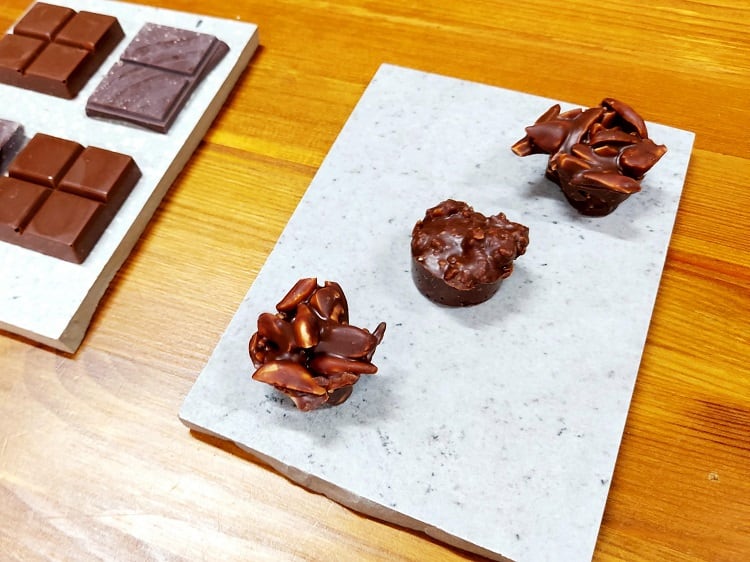
Another potential communication challenge lies in educating consumers around the problems – both ethical and environmentally sustainable – in the conventional cocoa chain. But QR codes could help play a role here, suggested marketing manager Partridge. “During the pandemic, QR codes came back with a vengeance. So perhaps we’d harness something like that, and direct consumers to a page on our site that really lays out all the issues.”
But again, it’s not all about sustainability: it’s also about taste, Partridge continued. “We want consumers to buy it for its taste, and then learn about its context.”


